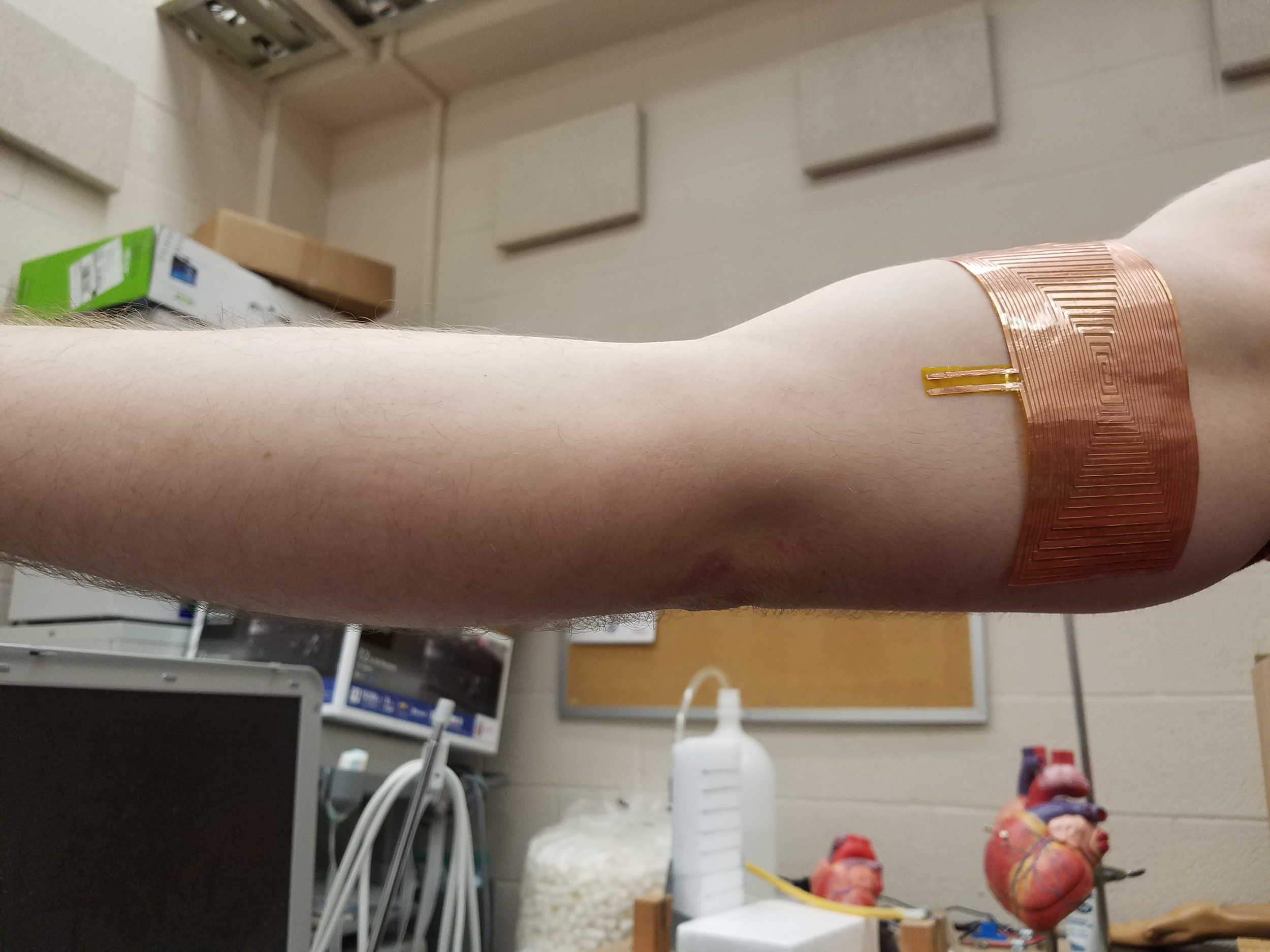Researchers at Wichita State University have been awarded with a $1.125 million NASA grant to continue development of a smart skin biomedical sensor.
The sensor is being created by the research team of Kim Cluff, Anil Mahapatro and Jeremy Patterson, along with the help of nearly a dozen WSU students and several seniors from the Project Lead the Way outreach program at Wichita North High School.
If the sensor does what researchers expect, it would be able to measure multiple physiological parameters that NASA is interested in, including blood flow, intercranial pressure, blood health, blood gas levels and muscle degeneration.
How the patch works and why NASA is interested
The sensor, which can fit on a person’s upper arm like a patch, is a piece of copper configured into a spiral. When activated by a radio frequency, it causes the patch to resonate and develop magnetic fields that penetrate into the tissue.
As blood flows through the tissue, it causes fluctuations in the magnetic field, allowing researchers (or eventually doctors) to get a much deeper and more accurate measurement than other wearable sensors such as those found on smart phones or smart watches. And it does this with no batteries or electrical components or connections, making the small wearable sensor particularly appealing to NASA, Cluff says.
“That makes it really robust and is why NASA is interested in it,” Cluff says. “You don’t have to worry about a certain component failing; the design is very simple.”
Cluff says he also envisions using the device for patients who have arterial diseases as an early-detection point-of-care diagnostic.
The researchers at Wichita State are using a fairly large device to energize the patch, but Cluff says the goal is to design it so a mobile phone could be held up to the patch and energize it through the phone’s radio frequency.
So far, they have used a skull lent to them by WSU’s Anthropology Department for testing. But the next step is to collect data on humans. Cluff says because the energy used for the sensor is the same that people have on them every day with their phones, the risk is very low.
The research group is in the process of getting Institutional Review Board (IRB) approval to test the skin patch on human subjects. The IRB is a committee set up for the protection of human subjects. Anyone interested can contact Cluff at kim.cluff@wichita.edu.


 Wichita State University
Wichita State University